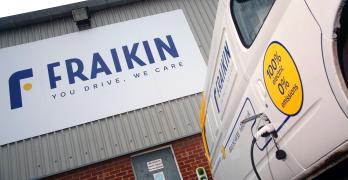Alternative fuels: what are the obstacles?
- 20/02/22
- 3 min
Goods transport is directly affected by traffic restrictions aiming to cut air pollution. Soon, diesel will no longer reign supreme in the sector. But alternative fuels don’t always offer all the solutions to all the needs. Let’s take a closer look at this subject.

We have been seeking to reduce the pollution produced by road transport long before COVID19. However, the drop in CO2 emissions linked to the massive slowdown in human activity due to the lockdowns shows the pertinence of environmental policies.
Since the end of the ‘90s and the entry into force of European standards, the European regulatory and legislative context have been creating the conditions for a significant drop in pollution. “The EURO6-d standard is a major step forward in environmental progress, explains Olivier Dutrech, Innovation Director, the conditions are in place to encourage manufacturers to adapt their ranges and companies to rethink their mobility strategy”.
Furthermore, the creation of 250 Low Emission Zones (LEZ) in Europe, is impacting the goods transport sector which is facing ever-increasing constraints linked to traffic restrictions.
Strengths and weaknesses…
The increasing number of fuels available in the market complicates the decision when juggling with environmental constraints, budgetary considerations, and fleet productivity.
Nevertheless, the biofuels option is definitely emerging. “Biofuels are very interesting because they no longer depend on refined fossil energies but instead on renewable components. But they are not yet available for all types of vehicles”, analyses Olivier Dutrech.
LPG (Liquefied Petroleum Gas) is an alternative which has become relatively popular. “Its use is not recommended in Europe due to the fact that maintenance is complex and costly, and that there are restrictions on its underground use, but that is not necessarily the case in the rest of the world”.
Electric engines are popular, even if their limited autonomy means that they tend to be used only in specific cases such as last mile delivery. “Their advantages of silence and zero emissions are tempered by the difficulties of recharging them and the investments needed to install charging points for the company”, notes Olivier Dutrech.
Hybrid vehicles are a good compromise because they combine the advantages of electric engines with the versatility of internal combustion engines. “However, to get the most out of them, we need to teach the users how to adapt the way they drive to maximise use of the electric engine”.
Refuelling: a key aspect
Hydrogen and gas engines share the same weakness: the shortage of refuelling stations for vehicles. Hydrogen production costs remain high (including from the environmental perspective), “but when the channel becomes structured, this alternative will be a very good solution”, considers Olivier Dutrech. “But drivers of vehicles running on gas or biogas will need to receive specific training, adds Olivier Dutrech because bad practices can really reduce their autonomy”.
For the moment, there is no universal solution. “The only constant on a global scale, finishes Olivier Dutrech, is the rising trend of rethinking mobility to make it eco-friendly and more in tune with the environmental requirements.”
Also worth reading

Tackling common EV misconceptions

Charging stations: how do you choose the right power?

